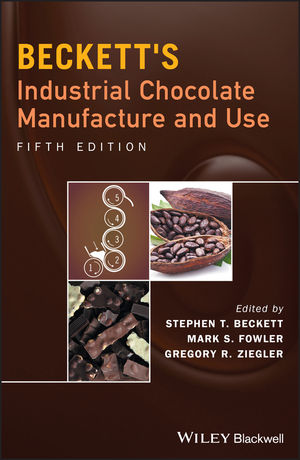Interview: ofi debuts solar-powered cocoa warehouse at Port of Amsterdam
With the new warehouse, the brand hopes to reduce its greenhouse gas emissions.

courtesy of: ofi
Candy Industry Senior Editor Liz Parker was recently able to connect with Chris Beetge, president of Europe, Middle East, and North Africa, ofi, to chat about its new solar-powered cocoa warehouse.
Liz Parker: ofi recently announced a new solar-powered cocoa bean warehouse in Amsterdam. Why has ofi chosen to invest in this, and what do you hope the impact will be?
Chris Beetge: Our sustainability ambition for cocoa, Cocoa Compass, sets measurable targets in the three areas where we can have the most impact. As part of our commitment to protecting the natural world, we are working towards an ambitious target of reducing natural capital costs by 30% by 2030 [1], including by reducing emissions from processing.
Investing in innovative technology, like our new solar-powered warehouse, will help us reduce our greenhouse gas emissions and reach our target, as well as support our customers in achieving their own sustainability goals.
At the warehouse in Amsterdam, we’ve installed nearly 7,000 solar panels, which could lead to the reduction of 1,350 tons of CO₂ per year. This is the equivalent of 67,500 trees absorbing carbon from the atmosphere and utilizes roof space in the region of two football pitches in size to maximize green energy usage. It’s our expectation that the warehouse will also be certified carbon-neutral in the future.
LP: Could you tell us what else makes the warehouse unique?
CB: As well as powering the warehouse using exclusively renewable energy, we’re using an innovative conveyor belt system, where cocoa is directed into one of the 110 available pens, creating bulk micro lots managed by our partner, Commodity Centre Group. This allows for greater segregation of the beans to both preserve flavor and allow us to maintain quality and traceability. We are proud that, to our knowledge, it is one of the only systems like this in existence.
LP: What other measures are ofi taking to cut emissions from processing?
CB: As well as the solar-powered warehouse, we have invested in two new circular biomass boilers at our cocoa processing factories in the Netherlands and Germany, adding to our existing network of shell boilers.
The boilers use waste cocoa shells, a by-product of the production process, as fuel to generate steam, which then powers the crafting of cocoa ingredients from our premium brand, deZaan.
In 2022, we used 8,000 tons of waste cocoa shells to generate green energy, equivalent to using 3.4 million cubic meters of natural gas, helping cut absolute CO2 emissions at our Koog aan de Zaan facility, the Netherlands, by 23%. And we expect this to increase to a 50% reduction overall. Whilst at our facility in Mannheim, Germany, the other shell boiler we have installed has the potential to provide up to 90% of the steam needed to power the facility, saving approximately 8,000 tons of CO2 annually.
LP: What about in the wider supply chain?
CB: We’re also taking action to measure and reduce emissions and natural capital costs from agriculture. For example, by training farmers in Good Agricultural Practices to make targeted interventions to cut emissions—from supporting them to compost opened cocoa pods into organic fertilizer, which has lower emissions than traditional fertilizer, to encouraging cocoa-based agroforestry to increase tree stock and sequester carbon. We collect and share data on our sustainability management system, AtSource, where customers can measure the carbon impact of their cocoa supply chain and model the impact of different scenarios to reduce greenhouse gas emissions.
[1] Natural capital accounting is an approach to measure the changes in the stock of natural capital at a variety of scales and to integrate the value of ecosystem services into accounting and reporting systems at national, corporate, project, and product levels. Percentage reduction is calculated from 2018 baseline.
Related: ofi debuts solar-powered cocoa warehouse at Port of Amsterdam
Looking for a reprint of this article?
From high-res PDFs to custom plaques, order your copy today!









